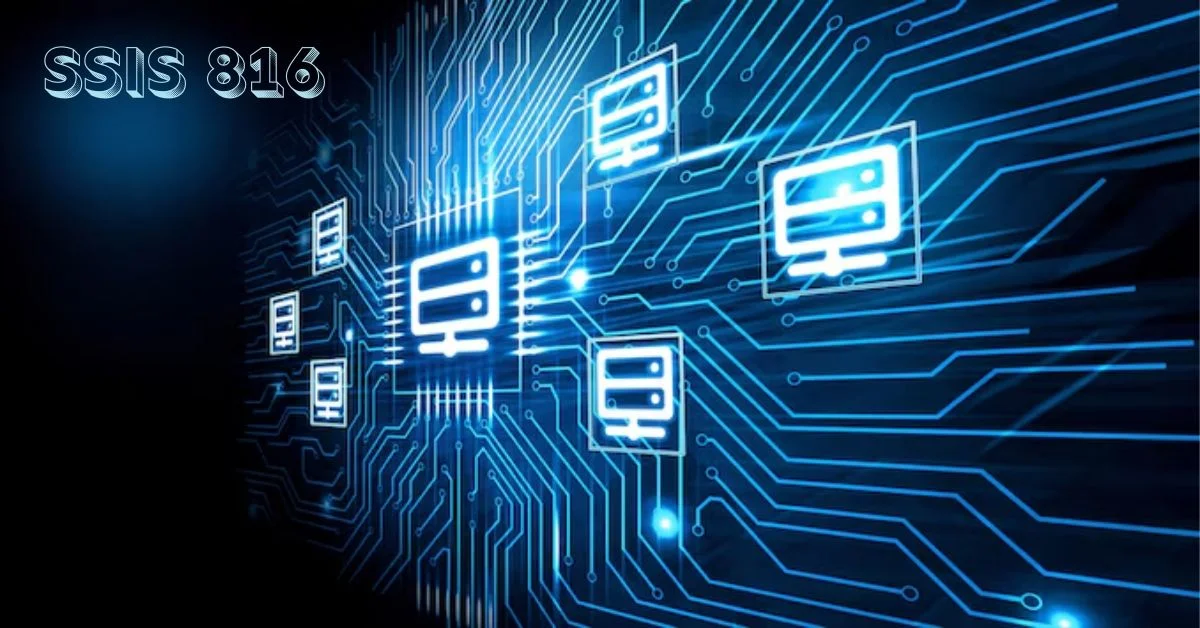SQL Server Integration Services (SSIS) is a powerful data integration and transformation tool from Microsoft that is widely used for data extraction, transformation, and loading (ETL) processes. One of the errors that users might encounter while working with SSIS is SSIS-816. This error can be particularly challenging, and understanding its causes, implications, and solutions is essential for maintaining effective data integration workflows.
In this article, we will provide an in-depth analysis of SSIS-816, exploring its meaning, common causes, and troubleshooting steps. We will also address frequently asked questions to offer a comprehensive understanding of this specific SSIS error.
What is SSIS-816?
SSIS-816 is an error code associated with SQL Server Integration Services. It typically indicates an issue with the SSIS package execution or configuration, leading to problems during data processing tasks. The error can be encountered in various scenarios, such as during the execution of a package, the data flow process, or when dealing with specific transformations or components within SSIS.
Understanding the Causes of SSIS-816
To effectively troubleshoot SSIS-816, it is crucial to understand its common causes. Here are some frequent issues that might trigger this error:
1. Incorrect Configuration
One of the primary causes of SSIS-816 is incorrect or incomplete configuration settings. This can include misconfigured connection managers, data sources, or destination settings. Ensuring that all configuration parameters are correctly set is essential for smooth package execution.
2. Data Type Mismatch
Data type mismatches between source and destination components can also lead to SSIS-816 errors. For example, if a data column in the source has a different data type than the corresponding column in the destination, the SSIS package may encounter issues during data transfer.
3. Missing or Incorrect Permissions
Lack of necessary permissions for accessing data sources or destinations can result in SSIS-816 errors. This issue often arises if the user account running the SSIS package does not have sufficient rights to perform the required operations.
4. Network or Connectivity Issues
Network-related problems, such as connectivity issues between the SSIS server and data sources or destinations, can cause SSIS-816 errors. These issues might involve network configuration, firewalls, or network outages.
5. Component or Package Corruption
Corruption in SSIS components or packages can lead to various errors, including SSIS-816. Package corruption may occur due to file system issues, improper package deployment, or unexpected interruptions during package development.
6. Resource Constraints
Insufficient system resources, such as memory or CPU, can also contribute to SSIS-816 errors. When the SSIS server or associated components do not have enough resources to handle the workload, errors can occur.
Troubleshooting SSIS-816
To resolve SSIS-816 errors effectively, follow these troubleshooting steps:
1. Check Configuration Settings
Verify that all configuration settings for connection managers, data sources, and destinations are correct. Ensure that all connection strings, credentials, and settings match the requirements of the source and destination systems.
2. Validate Data Types
Review the data types of columns in both source and destination components. Ensure that they are compatible and that any necessary data type conversions are correctly implemented in the data flow.
3. Verify Permissions
Confirm that the user account running the SSIS package has the necessary permissions to access and manipulate the data sources and destinations. Update permissions if required and ensure that security settings are appropriately configured.
4. Investigate Network Issues
Check for any network connectivity issues between the SSIS server and data sources or destinations. Test network connections, review firewall settings, and address any network-related problems that may be impacting SSIS operations.
5. Repair or Rebuild Packages
If package corruption is suspected, try to repair or rebuild the affected SSIS packages. Recreate any corrupted components or use version control to revert to a stable version of the package.
6. Monitor System Resources
Monitor system resources, such as memory and CPU usage, to identify any potential constraints impacting SSIS performance. Address resource limitations by optimizing the package, increasing available resources, or tuning system settings.
7. Review Error Logs
Examine SSIS error logs and detailed error messages for additional clues. Error logs can provide valuable information about the specific issue causing SSIS-816 and help pinpoint the exact component or configuration at fault.
FAQs About SSIS-816
1. What is SSIS-816?
SSIS-816 is an error code associated with SQL Server Integration Services, indicating issues with SSIS package execution or configuration. It typically arises during data processing tasks due to various factors, such as incorrect configuration, data type mismatches, or network issues.
2. What are common causes of SSIS-816 errors?
Common causes include incorrect configuration settings, data type mismatches, missing or incorrect permissions, network or connectivity issues, component or package corruption, and resource constraints.
3. How can I troubleshoot SSIS-816 errors?
To troubleshoot SSIS-816 errors, check configuration settings, validate data types, verify permissions, investigate network issues, repair or rebuild packages, monitor system resources, and review error logs.
4. What should I do if the error is due to configuration issues?
Verify that all configuration settings for connection managers, data sources, and destinations are correct. Ensure that connection strings, credentials, and other parameters match the requirements of the source and destination systems.
5. How do I address data type mismatches?
Review and ensure compatibility of data types between source and destination components. Implement any necessary data type conversions or transformations in the SSIS package to address mismatches.
6. What if network connectivity issues are causing the error?
Check for network connectivity problems between the SSIS server and data sources or destinations. Test connections, review firewall settings, and address any network-related issues impacting SSIS operations.
7. How can I identify if package corruption is the issue?
If corruption is suspected, try to repair or rebuild the affected SSIS packages. Recreate corrupted components or use version control to revert to a stable version of the package.
8. What role do system resources play in SSIS-816 errors?
Insufficient system resources, such as memory or CPU, can contribute to SSIS-816 errors. Monitor resource usage and address any limitations by optimizing the package or increasing available resources.
9. Where can I find additional information about SSIS-816 errors?
Refer to SSIS documentation, error logs, and community forums for additional information and troubleshooting tips. Detailed error messages and logs can provide valuable insights into the specific issues causing SSIS-816 errors.
10. Can SSIS-816 errors be prevented?
While it may not be possible to prevent all SSIS-816 errors, following best practices for SSIS package development, configuration, and resource management can reduce the likelihood of encountering such errors. Regularly monitoring system performance and updating configurations as needed can also help prevent issues.
Conclusion
SSIS-816 is an error code that signifies challenges within SQL Server Integration Services, impacting package execution and data processing tasks. By understanding the common causes and implementing effective troubleshooting steps, users can address SSIS-816 errors and maintain efficient data integration workflows. Whether the issue stems from configuration settings, data type mismatches, network problems, or other factors, a systematic approach to resolving these errors will ensure the continued success and reliability of SSIS operations.

 ENTERTAINMENT8 months ago
ENTERTAINMENT8 months ago
 BLOG11 months ago
BLOG11 months ago
 NEWS11 months ago
NEWS11 months ago
 BLOG11 months ago
BLOG11 months ago
 NEWS11 months ago
NEWS11 months ago
 GAMES11 months ago
GAMES11 months ago
 Education11 months ago
Education11 months ago
 TECH11 months ago
TECH11 months ago



